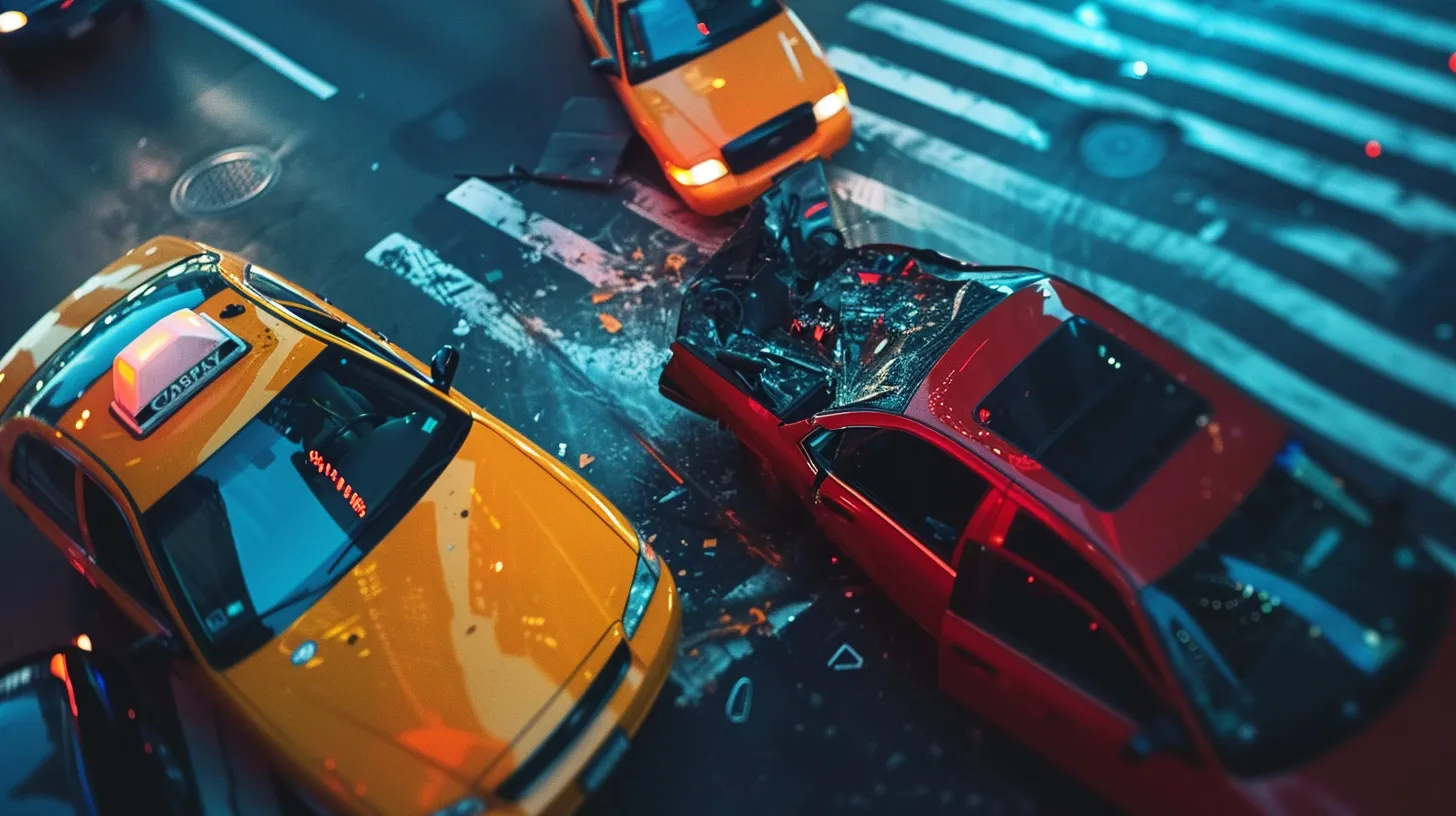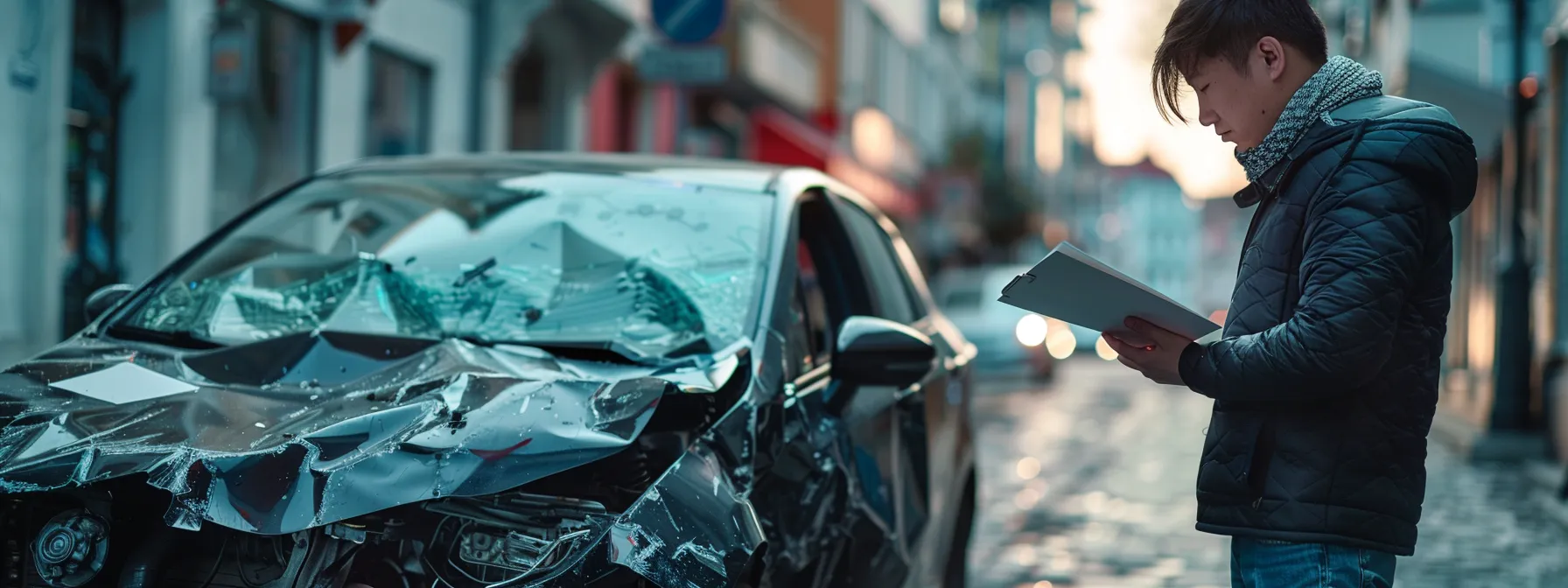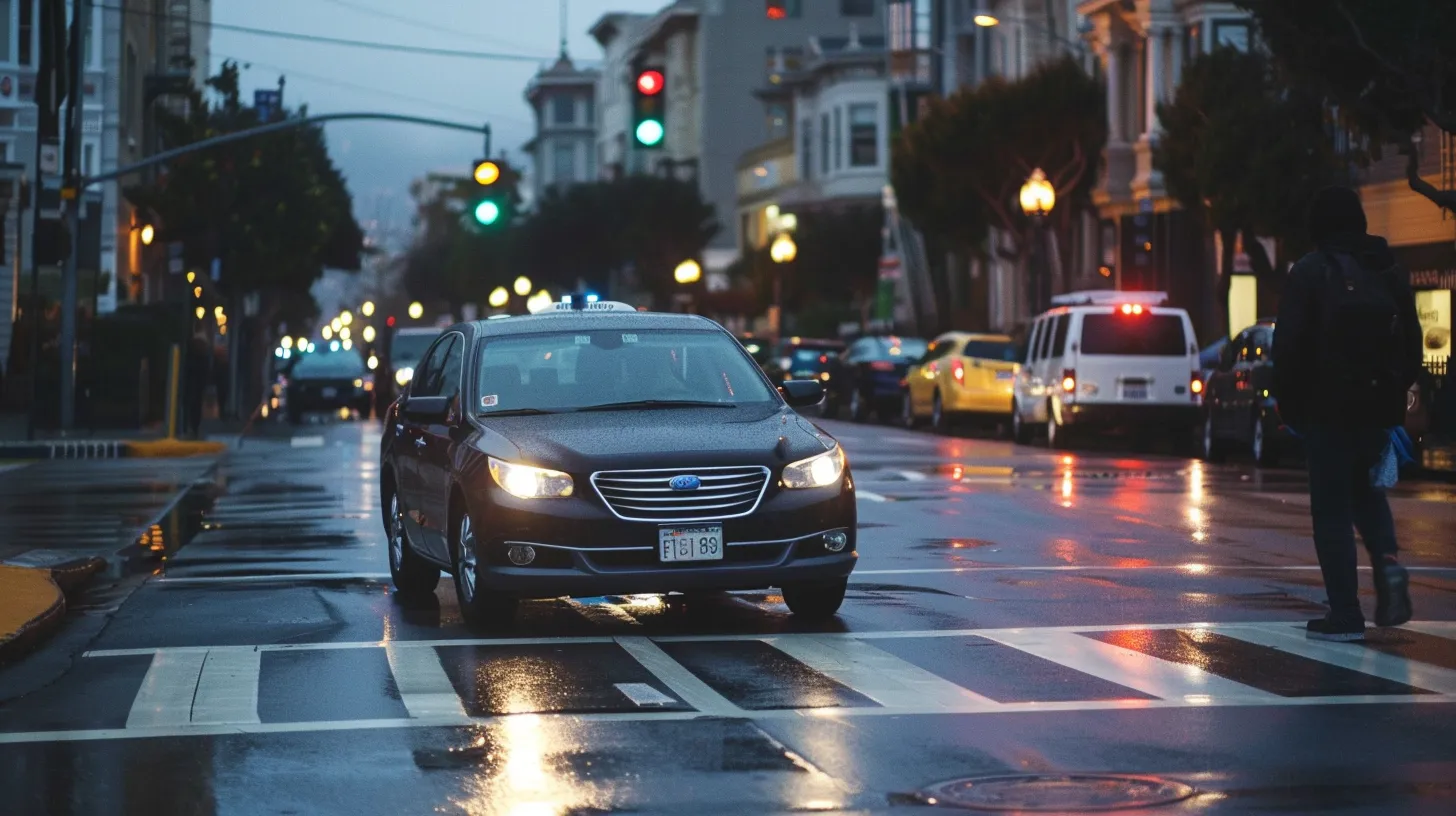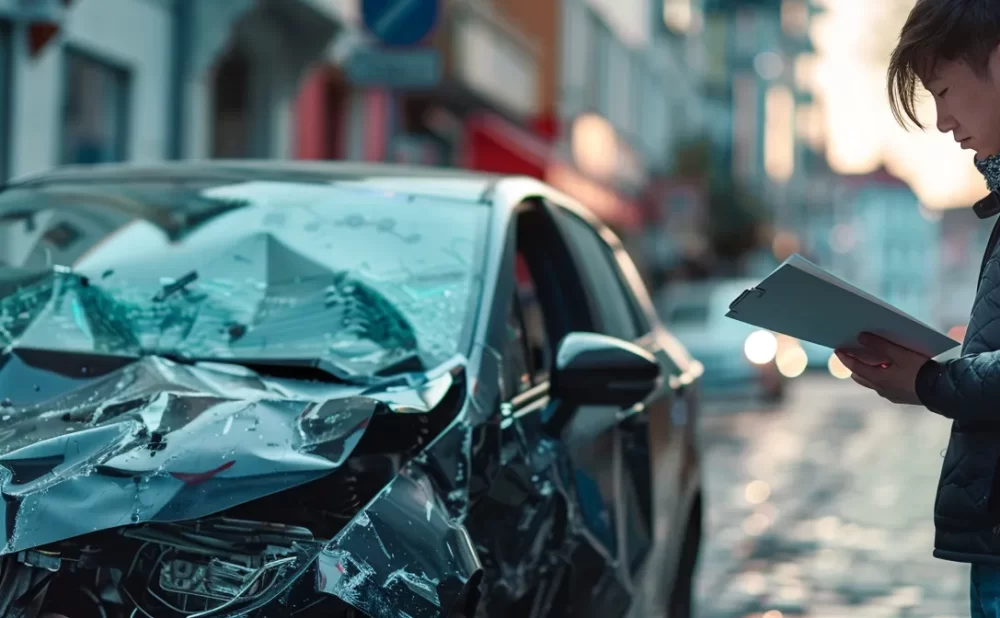Have you suffered a catastrophic injury from a Lyft accident at a traffic light and felt overwhelmed about what to do next? In a world where ridesharing is part of our everyday lives, knowing your rights and the steps for legal recourse is vital. Our guide lays out a clear path for understanding legal rights, determining liability, and navigating insurance coverage to help you with Filing an Accident Lawsuit. By reading on, you’ll learn how to advocate for yourself and potentially maximize compensation for life-changing situations, including those as serious as amputation. Let’s clarify the process and empower you to take control after a disruptive Lyft incident.
Understanding Your Legal Rights After an Uber or Lyft Accident
If you find yourself the victim of a rideshare incident, understanding your legal avenues is vital. Injury cases stemming from Uber or Lyft accidents present unique challenges, whether you’re a passenger, pedestrian, or another driver affected. This guide sheds light on the complexities of such claims, from the rights of passengers injured within a rideshare vehicle to the recourse available to pedestrians and others involved in the mishap. Knowledge on initiating a car accident lawsuit, and special considerations like shoulder responsibility introduced by entities such as the New York City Taxi and Limousine Commission, are explored to equip you with the necessary clarity on navigating these situations.
Recognizing the Differences in Rideshare Accident Claims
Rideshare accident claims diverge from standard vehicle collision cases primarily due to the multifaceted nature of liability and insurance coverage inherent to companies like Uber and Lyft. Passengers, as well as injured pedestrians or other drivers, must navigate the distinct policies that ridesharing companies employ, which often include high coverage limits contingent on the driver’s status at the time of the incident. Understanding these differences is pivotal for individuals seeking compensation, whether it’s for lost wages due to injury or damages resulting from an accident.
Instances of drowsy driving or exceeding the speed limit by a rideshare driver can introduce further complexities into an accident claim, challenging the injured party to substantiate their case. The utilization of surveillance footage and the driver’s trip logs can offer conclusive evidence in these scenarios. It is crucial for those affected to comprehend the intricacies of presenting a claim against a ridesharing company, ensuring that all relevant facts and circumstances of the incident have been meticulously documented and accounted for in the legal process.
Passenger Rights When Injured in a Rideshare Vehicle
As a car accident victim, a passenger in a rideshare vehicle possesses specific rights that warrant protection should an unfortunate incident occur. When injured in a Lyft accident, for instance, the passenger is entitled to make a claim against the responsible party’s insurance company. In many cases, rideshare companies boast comprehensive coverage that extends to passengers, ensuring that medical expenses and other related damages are compensated accordingly.
In the event of a car accident involving Uber or Lyft, initiating an accident lawsuit requires a clear understanding of these rights and the procedures involved. Unlike a typical construction site injury claim, the passenger must navigate the complex web of ridesharing laws and insurance policies. A meticulous approach to gathering evidence, such as documenting injuries and the accident scene, can significantly bolster their case, facilitating a smoother legal journey towards just compensation.
Rights of Pedestrians and Other Drivers Involved
Pedestrians and other drivers who have been involved in an Uber or Lyft accident often face uncertain terrain on their road to compensation. In New Jersey, for instance, legal proceedings at the New Jersey Superior Court level may come into play, especially when determining fault. When a pedestrian is struck by a rideshare vehicle or when another driver is involved in a collision with a rideshare driver operating under the influence of fatigue or distraction, enlisting a lawyer with specific expertise in this niche can be essential in asserting their rights and navigating complex liability issues.
Witness testimonies can be a critical component, especially when incidents involve unexpected variables such as a garbage truck suddenly entering the roadway, leading to a multi-vehicle crash. A lawyer experienced with rideshare cases will know how to effectively leverage witness accounts and additional evidence, constructing a robust case on behalf of their client. In proving fault, a clearly presented argument can direct the outcome toward just compensation for injuries and other damages sustained, giving individuals the legal footing needed to challenge a large transportation network company.

Determining Liability in Uber and Lyft Incidents
Determining fault in Uber or Lyft accidents is crucial to filing a successful complaint. This section examines key factors, such as the driver’s behavior, including potential distracted driving, the company’s role in ensuring safety, and the added complexities when third parties create additional risks. It also analyzes how the driver’s status at the time of the incident influences liability, when rideshare companies bear responsibility, and the intricacies of shared fault and comparative negligence. Each topic empowers you to understand and assert your rights effectively.
Establishing Fault: Driver, Company, or Third Party
In the aftermath of a rideshare collision, pinning down responsibility can be challenging, as factors such as negligent driving, corporate oversight, and unforeseen circumstances by third parties intersect. Those filing a personal injury lawsuit must consider the driver’s actions—were they distracted or adhering to road safety? Simultaneously, the rideshare company’s due diligence in hiring and monitoring its drivers comes under scrutiny. The intricacies of liability become further entangled should a third party’s actions contribute to the incident, making it crucial for the victim’s legal advocate to dissect and present the facts clearly.
Understanding the nuances of who bears the most fault dictates the direction of a wrongful death or injury claim. For instance, if the transportation network’s guideliness and safety protocols were disregarded leading to pain and suffering, they could be held liable. Conversely, identifying external factors—such as a poorly maintained transport vehicle causing the Uber or Lyft driver to swerve—can shift the burden of fault. A knowledgeable advocate is instrumental in unraveling these layers of accountability, ensuring victims receive just compensation for their ordeal.
The Impact of Driver Status on Liability
In the landscape of a motor vehicle accident involving rideshare services, the driver’s status during the event is pivotal in determining liability under the insurance policy. If the rideshare app was active and the driver was awaiting passengers, or a ride was in progress, both Uber and Lyft provide a higher tier of insurance that may cover expenses such as medical costs and physical therapy. However, when a driver is off-duty or the app is off, their own personal insurance is the primary avenue for claims, which complicates an uber accident claim.
The principle of vicarious liability comes into play when assessing an Uber accident claim, where the company may be held accountable for their driver’s actions while the application is engaged. This can significantly impact the victim’s route to compensation as rideshare companies possess substantial policies designed to address the consequences of accidents. Thus, determining the driver’s status at the time of a collision is not only critical for establishing liability but also influences the resources available for recovery, guiding victims through the intricate process of just restitution.
Employer Responsibility: When Rideshare Companies May Be Liable
In the realm of rideshare accidents, the law places specific responsibilities on companies like Uber and Lyft, especially when their role in the incident is under the judge’s scrutiny. If the plaintiff demonstrates that the accident occurred due to the rideshare company’s negligence in vetting drivers or maintaining vehicle safety standards, the court might hold the company liable for damages. This connection, established through diligent investigation and legal acumen, places rideshare firms in the spotlight, challenging their duty of care to customers and the public.
Moreover, when a rideshare accident happens while the driver is logged into the app and engaged in work-related activities, the judge may decide that the employer should bear the brunt of liability. This can be due to the legal principle that companies are responsible for their employees’ actions while on duty. In such cases, a knowledgeable attorney can help the plaintiff navigate the complexities of law to ensure the liable parties compensate for the damages incurred during the accident.
Shared Fault and Comparative Negligence in Rideshare Accidents
In rideshare accident cases, the concept of shared fault and comparative negligence often guides the determination of liability and compensation awards. When both the rideshare driver and another party, for example, have contributed to the cause of the incident, a precedent of comparative negligence might reduce the recoverable damages proportionally to the degree of each party’s fault. This principle becomes particularly crucial when a passenger’s actions, such as not wearing a seatbelt or other contributing behaviors, affect their compensation for injuries.
A successful accident lawsuit in the context of Uber and Lyft incidents depends heavily on the testimony of those involved, eyewitness accounts, and whether a deductible has been met, as these elements can influence a judge or jury’s perception of fault. Even in complex cases that might share characteristics with medical malpractice, where the negligence of a professional directly leads to harm, statutes are in place to ensure a fair allocation of fault, helping those affected to navigate the murky waters of liability and secure the compensation they need for recovery.

Steps to Take Immediately Following a Rideshare Accident
Immediately following a rideshare accident, specific actions are essential for safeguarding your health and reinforcing your car accident case. Safety and medical attention take top priority, followed by thoroughly documenting the scene and collecting evidence. It’s crucial to report the incident to both the authorities and the respective rideshare companies without delay. Furthermore, all details and records pertinent to the event should be meticulously preserved to support any potential accident settlement. Our forthcoming discussion will provide focused insights into each of these critical steps, guiding you whether you’re a worker injured in the course of employment or a passenger seeking to understand the role of truck drivers and attorneys in the context of your claim.
Prioritizing Safety and Medical Attention
In the immediate aftermath of a rideshare incident, your first step should be to assess personal safety and seek medical attention, even if injuries like neck strain might not present immediate symptoms. Pursuing immediate medical evaluation following an Uber car accident lawsuit is not just crucial for health; it’s also valuable evidence for subsequent Lyft insurance claims. A prompt and thorough medical checkup can significantly influence the verdict, laying the groundwork for a comprehensive claim.
It is of paramount importance for victims of a rideshare accident to obtain documented medical evaluations as they may form the basis of their personal injury claims. This documentation serves as concrete proof of injuries, a key component in asserting the severity and impact of the incident for any Lyft insurance claims. Taking this step without delay after an accident can greatly assist in precisely evaluating the ensuing lawsuit, positioning victims for a potentially favorable outcome when seeking justice and compensation.
Documenting the Scene and Gathering Evidence
After a rideshare accident, it’s critical for any passenger to promptly document the scene to strengthen their case, especially if filing an accident lawsuit that might involve claims for punitive damages or injuries as severe as paralysis. Clear photographs of the vehicle positions, roadway conditions, and any visible injuries are indispensable. This evidence not only captures the immediate aftermath of the accident but provides an unambiguous depiction of the event, essential for any ensuing Uber accident legal process.
Ensuring safety remains paramount; once it is established, collecting contact information from witnesses and recording their accounts can greatly support the credibility of an accident lawsuit. The details they provide could be pivotal in establishing fault and may shape the pursuit for punitive damages, bringing justice for those wronged in an Uber accident. Personal accounts and evidence collectively form a compelling case, demonstrating the causation and extent of any injuries suffered by passengers.
Reporting the Accident to Authorities and Rideshare Companies
Once any imminent dangers have been managed after an Uber or Lyft incident, it’s imperative to report the accident to the proper authorities—this ensures the compilation of a formal accident report that can serve as personal injury protection. Contacting law enforcement not only formalizes the event’s details but is also essential should the claim involve additional traffic law violations, such as cycling mishaps or instances of drunk driving. This report is a key element in building your case, and its prompt filing can be crucial when addressing liability and negligence, particularly where there has been a failure to adhere to traffic regulations.
In parallel, notifying the respective rideshare company straight away is a required step and is typically facilitated through their app or customer support line. This will trigger their internal review process, which could affect the available personal injury protection measures for passengers. If, for instance, your incident involves a fall down faulty stairs when exiting the vehicle, or if the driver’s action or inaction contributed to the incident, Uber or Lyft’s response becomes an integral part of the accident record. Swift and clear communication with these companies can make a significant difference in the insurance and legal processes that follow.
Preserving Records for Your Accident Lawsuit
Securing thorough records following a rideshare accident is paramount when preparing to launch Uber accident claims. Victims should collect all pertinent information from insurance companies, medical reports documenting injuries, and any proof of lost wages or other damages. This could include photographs of the incident scene, including any relevant elements like nearby sidewalk conditions in Queens or any signs of nursing home abuse if the incident involved a resident being transported. Such meticulous record-keeping underpins the strength of your case, ensuring you have a robust compilation of evidence to present in court.
For individuals entangled in the aftermath of a rideshare incident, preserving all communication with insurance companies is a vital step. Documentation should encompass all correspondence related to the event, medical treatment received, and interactions with law enforcement. It is not uncommon for insurance companies to seek early settlements; having a comprehensive dossier can aid in countering lowball offers, heightening the potential for fair compensation. Solid evidence serves to underpin the legitimacy of the claim, setting the stage for success in Uber accident claims and leveraging the available legal pathways to achieve just redress.

Navigating Insurance Coverage After an Uber or Lyft Accident
When an Uber or Lyft accident disrupts your life, comprehending the intricacies of insurance coverage becomes crucial. Rideshare insurance policies often have multi-tiered coverage that varies based on when the accident occurred—whether the driver was waiting for a ride request, en route to pick up passengers, or during a trip. As car accident victims seek compensation for work accidents, wrongful death claims, or personal injury, understanding these differences is essential. This section will guide you through the complexities of dealing with insurance adjusters, the hurdles of claim denials, and the predicament of underinsured drivers. Each topic offers valuable insights into forging a path to recovery for those affected by such incidents.
Understanding Rideshare Insurance Policies
Rideshare insurance policies can be mazes of clauses and coverage limits, posing challenges for those affected by Uber or Lyft accidents. An arbitration clause, for example, may direct resolution away from public courts, signaling a need for skilled accident attorneys to navigate private legal proceedings. Understanding these policies is crucial for victims, particularly if negligence has caused serious injuries necessitating surgery and thereby invoking high-limit insurance coverage for compensation.
Amid the hazards of navigating rideshare accident claims, it’s imperative to discern the nuances of the insurance framework protecting Uber and Lyft passengers and third-parties. Accident attorneys well-versed in these matters can pinpoint where standard policies end and additional rideshare coverage begins, ensuring victims can rightfully claim for catastrophic events that may have led to surgery or other extensive medical care. The priority becomes a clear portrayal and contestation of any alleged negligence that precipitated the accident.
Differences Between Periods of Rideshare Coverage
Understanding the differences between periods of rideshare coverage is essential when filing car accident claims, particularly in cases involving severe injuries such as a spinal cord injury. Rideshare companies maintain varying levels of liability insurance that hinge on the driver’s app usage during the time of the accident. This tiered approach impacts the potential compensation available, the legal strategies undertaken during a jury trial, and the ability to pursue claims against the rideshare company’s insurance.
As drivers transition between personal time and logged-in periods awaiting or completing rides, the coverage activates distinct layers of insurance protection. Victims must be aware that the potential for comprehensive coverage increases when the rideshare driver is actively engaged in a ride, as opposed to when they are offline or waiting for a trip request. This knowledge is pivotal, particularly when accidents result in life-altering conditions or during complex litigation, such as construction-related incidents where insurance policy specifics can significantly sway a jury trial’s outcome.
Dealing With Insurance Adjusters and Claims
Interacting with insurance adjusters after an Uber or Lyft accident requires clear communication and strategic negotiation to ensure fair claim settlement. Victims should promptly furnish adjusters with the accident report and medical documents, using an email address dedicated to the accident claim to streamline correspondence. Balancing assertiveness with cooperation, especially when seeking compensation for injuries from complex cases like a dog bite occurring in an Uber vehicle, is paramount for successful resolution.
When claim disputes escalate, involving an appellate court may become necessary to uphold victim’s rights. It’s essential to have a seasoned defender guide you through legal nuances, ensuring that insurance companies don’t undermine the severity of the accident or the resulting damages. Keeping meticulous records of all exchanges, from initial contact to detailed negotiation talks, can be a decisive factor if the claim proceeds to appellate scrutiny.
Challenges With Insurance Denials and Underinsured Drivers
Among the hurdles one may encounter after an Uber car accident are the challenges posed by insurance denials and underinsured drivers, which can complicate the trajectory of car accident lawsuits. An insurance company can force the victim to file a motion if they refuse to honor a claim. Dealing with an underinsured driver can place a further strain on the pursuit of fair compensation, possibly exceeding the driver’s policy limits and affecting the victim’s ability to recover adequate damages for injuries, let alone damages to property like the roof of a car.
When confronting denials, individuals involved in an Uber car accident must marshal expertise to challenge the insurance company’s decision and prove entitlement to compensation. This process may involve compiling a comprehensive dossier of evidence, positioning oneself effectively during negotiations, and, if necessary, pursuing litigation to address the injuries and losses sustained. Successfully overcoming these challenges hinges not only on a keen understanding of insurance law but also on the resilience and determination to seek justice and proper reparation through the intricate maze of legal proceedings.

Filing an Accident Lawsuit Against Uber or Lyft
When the unfortunate happens, and an Uber or Lyft ride ends in an accident, victims need to understand the complexities of pursuing legal action. This portion of our guide lays out the critical aspects of filing an accident lawsuit, such as determining the right moment to take legal steps and navigating the intricacies of insurance law, especially when injuries like spinal cord damage or permanent disability are involved. It will walk you through the process of gathering evidence, the importance of meeting your state’s statute of limitations, and dealing with ‘clickwrap’ agreements that might affect your right to sue. This information is vital for those considering an ambulance ride to court to claim their rights after a rideshare accident.
Assessing When to Pursue Legal Action
Deciding when to seek legal action after an Uber or Lyft incident requires careful consideration of the statute of limitations. This legal timeframe governs the period within which you can bring a lawsuit and varies by state. Seeking timely legal advice is paramount, especially when specific events, such as a truck accident or a confrontation escalating to road rage, complicate your claim. A lawyer can help you understand how contract terms with the rideshare service may influence your options, ensuring you act within the legal deadlines to protect your rights.
In the wake of a rideshare collision, immediate legal counsel can make a significant difference. An attorney with expertise in vehicle accident claims can provide actionable insights, guiding you through the process of collecting evidence and filing a lawsuit. They can also interpret any contractual obligations that may affect your case, offering informed recommendations on the best course of action. Acting without delay ensures accurate capture and representation of event details, including truck-related damages or aggressive road actions, in your legal pursuit.
The Legal Process for Rideshare Accident Lawsuits
Embarking on the legal process for a rideshare accident lawsuit involves meticulous preparation and an understanding of the nuanced litigation landscape. When intending to sue Lyft or Uber, one must consider elements such as property damage, personal injuries like bone fractures, and the potential for a settlement. It’s essential to establish a clear connection between the incident and the injuries sustained, as well as documenting any property damage, to support the claim and enhance the chances of a favorable outcome.
The pursuit of justice in a rideshare accident often culminates in seeking compensation for damages and injury. An expertly navigated claim can lead to a settlement that adequately covers medical expenses, lost earnings, and other related costs. Those affected must engage seasoned legal professionals who specialize in these matters to uphold their rights and hold accountable the entities responsible for sanitation and safety standards.
Gathering Evidence to Support Your Claim
In the quest for justice after uber car accidents, collecting a robust body of evidence is critical. A paralegal can be instrumental in this phase, systematically organizing documentation such as medical records, police reports, and witness statements that prove pivotal in an uber accident lawsuit. This evidence not only substantiates claims of negligence but also supports demands for compensation, including loss of consortium, which are essential in acknowledging the full impact of the accident on a victim’s life.
Moreover, understanding the nuances of Lyft insurance can greatly affect the outcome of a lawsuit. When a paralegal collaborates with an attorney to analyze policy details, they uncover layers of coverage often overlooked. This detailed review explores all avenues for compensation, helping Uber car accident victims secure the maximum settlement they deserve and offering peace of mind during their recovery.
Statute of Limitations for Filing in Your State
Time is of the essence when considering legal action after an Uber or Lyft car accident. Each state enforces a specific statute of limitations, a time limit within which you must file a lawsuit. For example, a patient injured in a slip and fall while exiting a Lyft at an intersection may only have a limited period, typically ranging from one to three years, to initiate legal proceedings. It’s paramount for victims to consult with an attorney early to ensure they meet these crucial deadlines and preserve their right to seek justice and compensation for motor vehicle accident injuries.
Understanding the statute of limitations in your state is critical after a rideshare accident, as missing the deadline can bar you from compensation. Whether it’s a collision at a busy intersection or a passenger suffering injuries from a sudden stop, the clock starts ticking at the time of the incident. An attorney specializing in motor vehicle accident claims will advise on these time-sensitive requirements, guiding clients through the legal intricacies and providing support in filing a claim promptly to secure the compensation they deserve.

Maximizing Compensation for Your Rideshare Accident Injuries
Securing fair compensation for your rideshare accident injuries hinges on a clear understanding of the types of damages available and the calculation of both economic and non-economic losses. Legal representation plays a pivotal role in maximizing your car accident claim, as experienced lawyers can navigate premises liability issues and stress the nuances of your case. Whether through adeptly negotiated car accident settlements or representing your interests in court, the right legal guidance can markedly increase the likelihood of a favorable outcome. Each of the following topics unveils important strategies to bolster your position in recovering due compensation.
Types of Damages You May Recover
When pursuing compensation for a rideshare collision, victims may tap into a variety of damages. An expert witness can play a pivotal role in quantifying losses and establishing legal liability, while showcasing how the accident infringed upon the duty of care owed by the rideshare service. Recoverable damages can span medical expenses, lost income due to inability to work, and even compensation for emotional trauma experienced from the abrupt stop at a sign prior to impact.
Furthermore, the legal process may reveal entitlement to punitive damages, especially in instances of gross negligence. Successfully demonstrating that the rideshare company or driver’s failure to observe a stop sign, for instance, constituted a breach of duty of care, can significantly escalate the value of the claim under legal liability. This shift not only compensates for the tangible loss of income but also serves to penalize the responsible party, encouraging stricter adherence to safety regulations.
Calculating Economic and Non-Economic Losses
In the realm of rideshare accident litigation, calculating economic and non-economic losses is a critical process where legal tools such as depositions and interrogatories come into play. An attorney will meticulously analyze medical bills, repair costs, and lost wages to quantify economic damages, while also considering the more complex non-economic impacts like pain and suffering or loss of enjoyment of life.
These losses significantly influence the compensation scale and drive an attorney to account for every detail, ensuring they reflect in the damages sought.
One must bear in mind that non-economic losses can be as significant as their economic counterparts, although they lack a direct monetary beam. The effective representation by an attorney, who is usually compensated on a contingency fee basis, ensuring their motivation aligns with the client’s best interest, is indispensable in conveying the full extent of these subjective losses to the court or insurance adjusters. Their skill in articulating the depth of a client’s suffering is essential in ensuring that the compensation awarded truly reflects the totality of the victim’s experience.
The Role of Legal Representation in Increasing Compensation
The adept representation by a lawyer specializing in rideshare accidents can profoundly influence the compensation for psychological trauma and suffering. Their expertise in navigating policy negotiations recognizes and appropriately values non-tangible damages like pain and suffering, substantially increasing the overall settlement amount. By employing a strategic approach to presenting the case, their role is integral in conveying the depth of a client’s experience to insurance adjusters and courts alike.
Through skilled negotiation, legal representatives are able to advocate on behalf of the victim, addressing the full spectrum of their pain and suffering. They stand as a bulwark against low settlement offers from insurance companies, drawing on their understanding of policy nuances to secure fair compensation. Their negotiation tactics, backed by a robust portrayal of the client’s hardships, pave the way for higher settlements that reflect the true impact of the accident on an individual’s life.
Negotiating Settlements Versus Going to Trial
Deciding between negotiating a settlement or taking an Uber or Lyft accident case to trial often hinges on the strength of a demand letter sent to the insurance companies involved. A well-crafted demand letter that details injuries examined by a physician and expenses incurred due to reckless driving in Staten Island can set the stage for a settlement that reflects the severity of the impact on the victim’s life. Notably, settlements can be less time-consuming and more predictable compared to court trials, which might appeal to those seeking expedient resolution and compensation.
In New York City’s bustling urban environment, navigating the aftermath of a rideshare accident may lead one to weigh the prospects of a more protracted trial process. While trials in court can result in higher compensation, especially when evidence clearly indicates reckless driving, they also carry the unpredictability of jury decisions and might extend the emotional distress for victims. The decision to proceed to trial typically depends on the advice of experienced legal professionals who can adeptly assess the offer received in comparison to the potential benefits of a judicial verdict.
Conclusion
Navigating your rights following an Uber or Lyft accident is essential for securing the compensation you deserve. A comprehensive understanding of rideshare insurance policies, liability nuances, and the legal frameworks involved positions you to assert your claims effectively. Timely actions, meticulous documentation, and strategic legal counsel are pivotal in overcoming the complexities of such lawsuits. This guide serves as a critical tool, empowering you to navigate the legal landscape confidently and achieve just outcomes.







